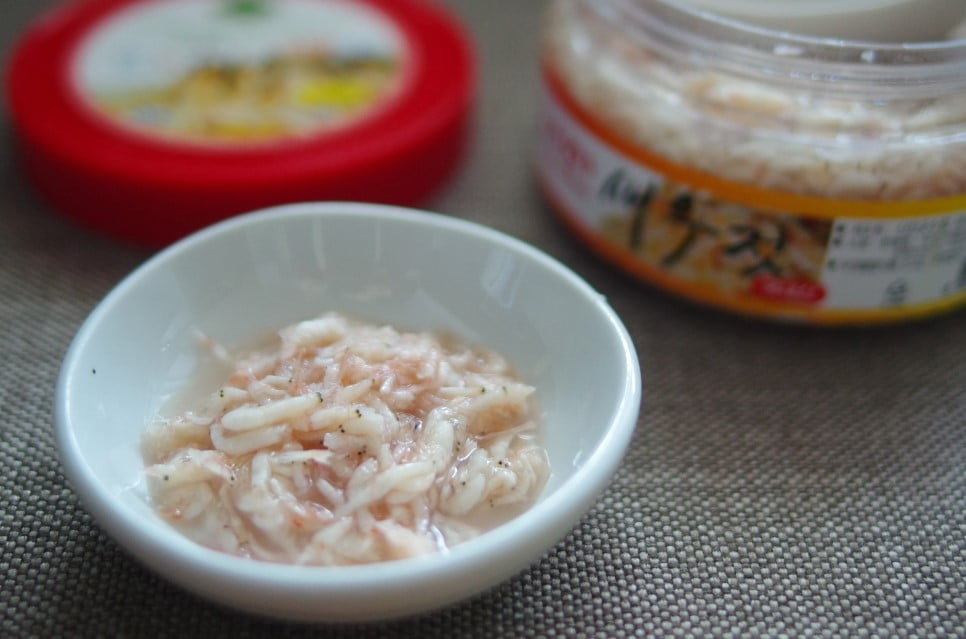Saeujeot 새우젓
Salted and Fermented Shrimp Paste
| Words by Joyce Kong |
Not all salts are created equal nor do they always look necessarily like salt. In Vietnam, a little fish sauce brings flavor and balance to a bowl of pho. In Italy, pickled anchovies round out the perfect marinara sauce. In Korea, that umami flavor is brought forth through saeujeot (새우젓), or salted baby shrimp.
Saeu means shrimp, and jeot refers to any fermented, salted condiment used to pickle or season. These tiny shrimp—less than an inch—hail from all over Korea, from oceans, brackish waters, and even freshwater sources. They are heavily salted and fermented over two to three months resulting in a salty, mildly oceanic paste. Depending on the season, species, and freshness of the shrimp, the quality of the finished product can vary widely.
Shrimp are a product of their environment and basically filter the ocean through their little bodies. When salted and fermented, the resulting concentration of pungent ocean flavors adds subtle brininess, ushering in a whole other dimension of flavor.
Saeujeot is most commonly used in making kimchi but is also used in steamed eggs and soups to provide depth and complexity. Saeujeot is also commonly served as a dipping sauce with pork dishes like bossam (“보쌈”), steamed pork belly. In addition to providing seasoning, saeujeot enhances the melt-in-your-mouth porkiness that bossam is known for. It’s also great in vegetable dishes or stirfries, but I would not recommend it in non-Asian dishes. Salted baby shrimp have their uses, but sometimes you’ve just got to stick with salt.
— Netizen’s Picks —
Gwangcheon Market, Museum, and Baekban Restaurant
The city of Gwangcheon is famous for its jeotgal (salted condiments among which saeujeot is one type). Visit to see a jeotgal market, jeotgal museum, and jeotgal baekban restaurant serving course meals of rice with every type of jeotgal. Gwangcheon Togul Shijang in Gwangcheon-ri, Hongseong-gun, Chungcheongnam-do.
Also check out: 13 Traditional Markets In Korea To Experience
Jeil Eobeo-i Sundae (제일 어버이 순대)
One of Seoul’s most famous sundae restaurants is Jeil Eobeo-I. The saeujeot served along with your sundae is great as a dipping sauce or as a condiment to help take away the pungent smell of pork intestine. 93-2 Namyeong-dong, Yongsan-gu, Seoul near Sookmyung University Station. 02-794-0480
Joyce Kong is a foodie blogger who works at MangoPlate, a mobile app for restaurant discovery in Seoul. www.mangoplate.com



